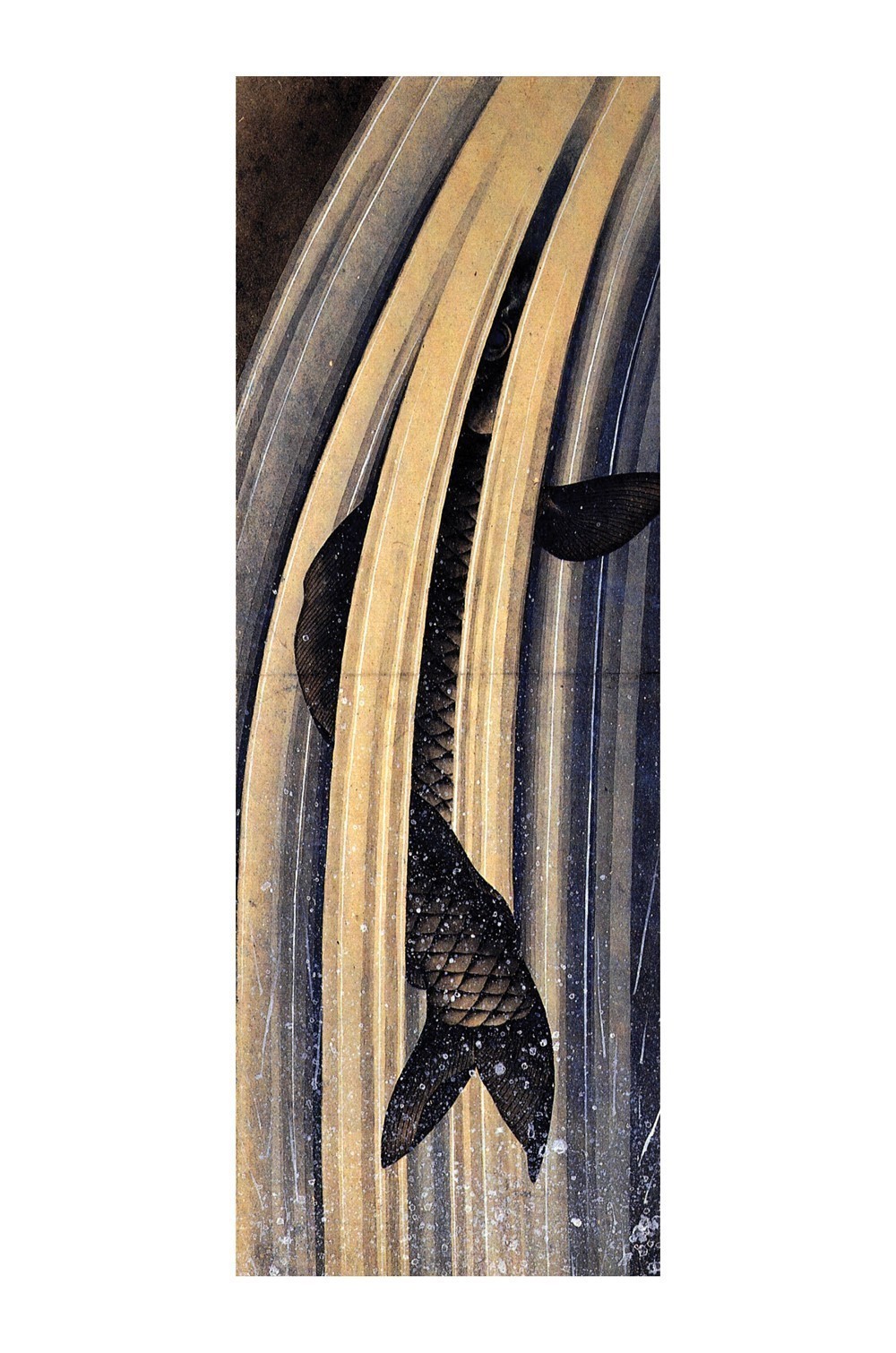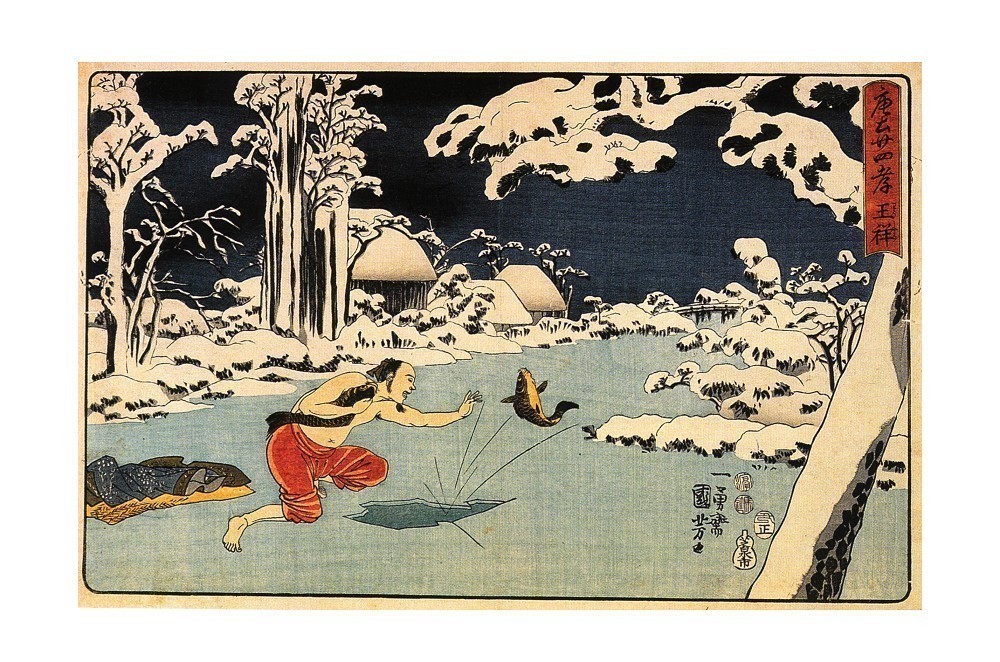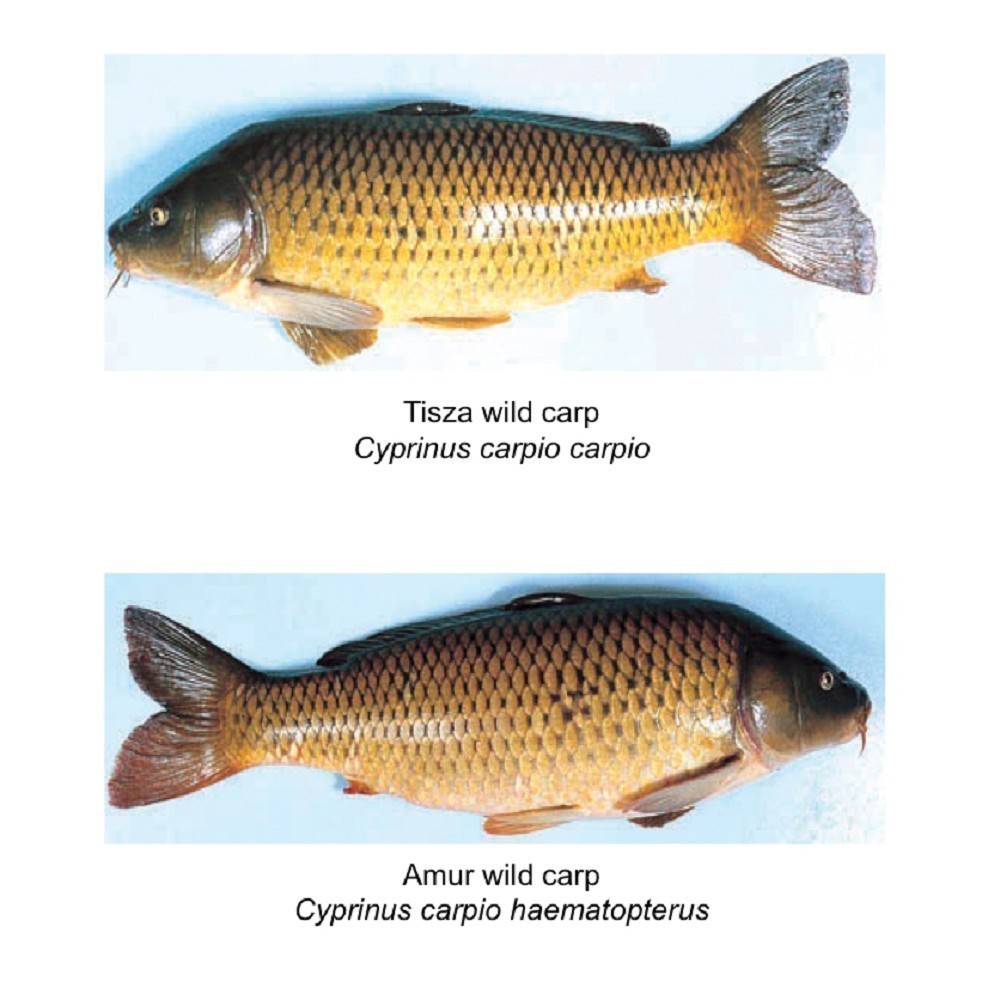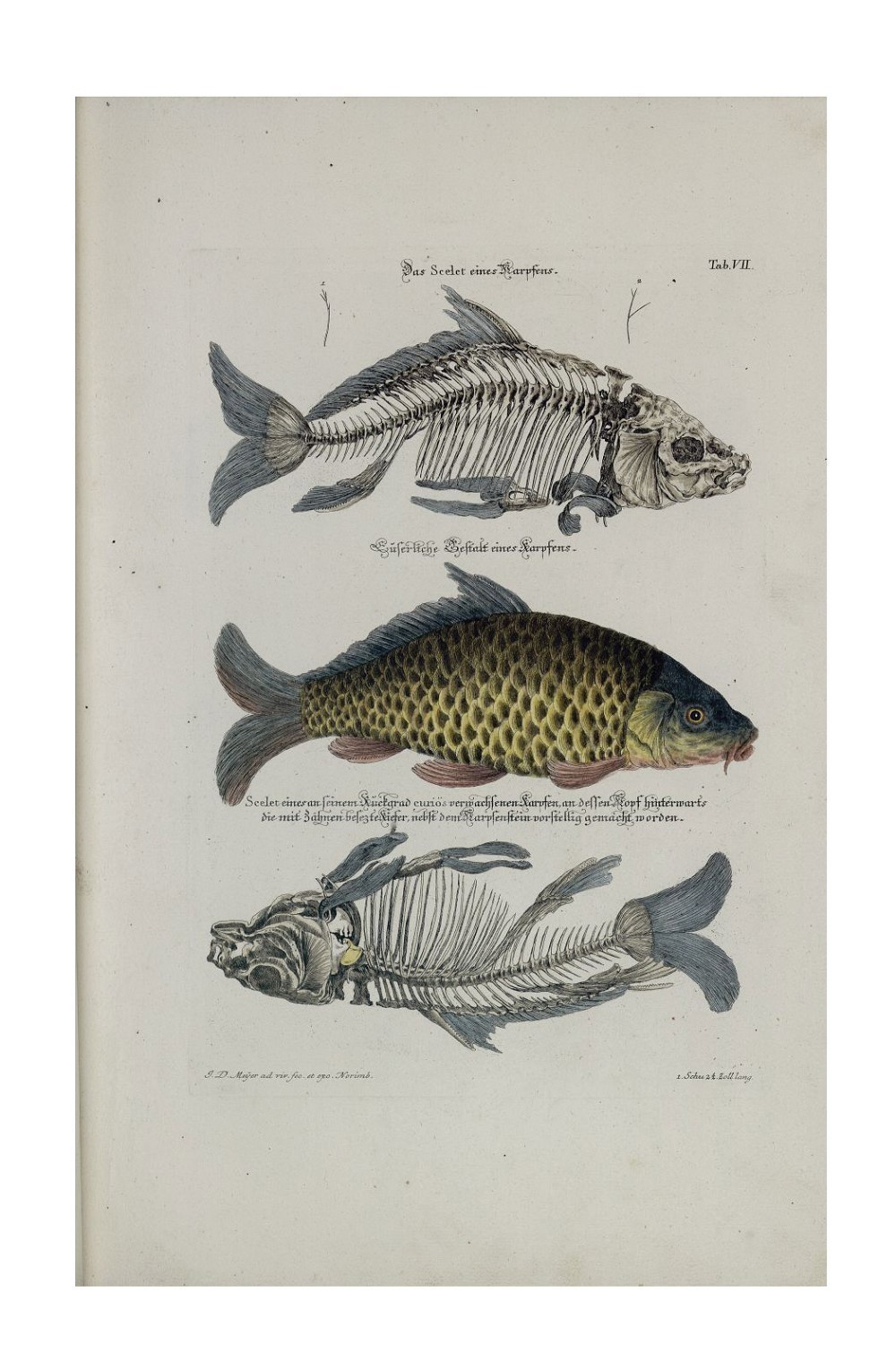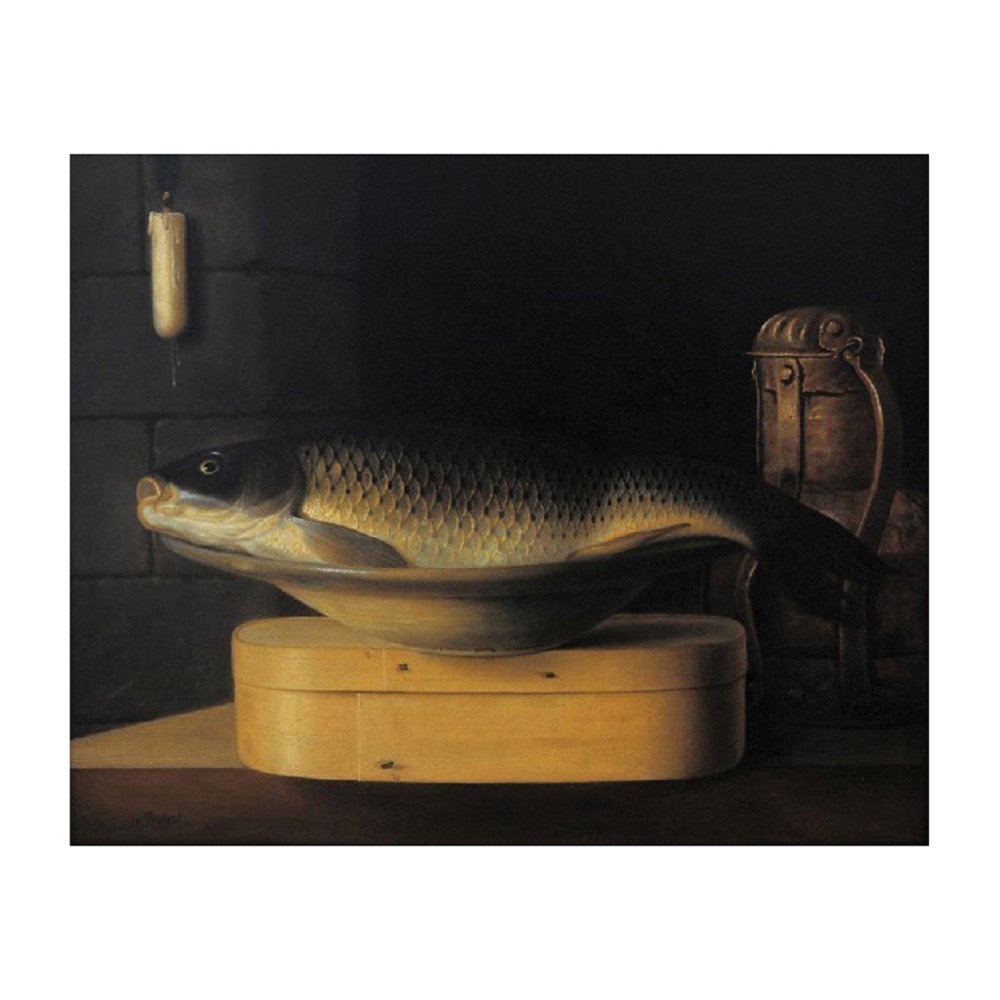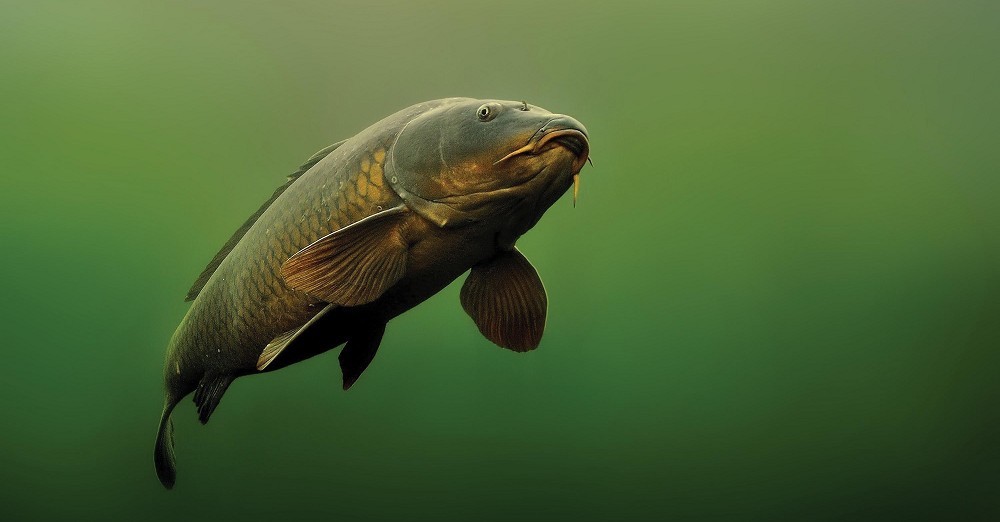
The Carp Part 1: Origins
In this brand-new, five-part series, carp fanatic, Simon Blanford takes a much closer look at the carp, its history and biology...
Carp. Carp, carpe (from the old French), carpa (from the even older late latin – probably). Possibly all from some Germanic origin based on the word karpfen. But the exact source of the carp’s common name is still a little veiled. A bit like pinpointing the origins of the fish itself. Did our carp originally come from the east like other well-established imports, martial arts, manga and Mazda? Or did carp go to the east preceding Marx, Mercedes and a mortal fear of Mormons? Or perhaps the fish of fishes was everywhere at once, a sort of minor aquatic deity, omnipresent, omniscient.
For a long time the received wisdom from historians stated that carp culture started in China (possibly as early as the 5th century BC) and the practice, and domesticated forms of carp it produced, subsequently came to the west. In recent years however, it has been pointed out that there is no evidence that the fish under culture in the early east were actually the carp we know and pursue with such zeal. They may well have been other forms of ‘carp’: grass carp, bighead carp, black carp, silver carp or even goldfish, which are known to have had a long history of domestication in China. Koi carp, often thought to be an ancient example of our interest (and they are true carp) are a relatively new phenomenon, the first deliberate selection for the various colour variants only starting in the 1950s. Biologists haven’t helped the confusion about the origins of carp either. There has been so much crossing and sharing of the fish all across the European and Asian continents, so many releases and re-releases into the wild, that unraveling the molecular data that might establish who was where first has, until recently, been a subject shrouded in mist.
Now historians and biologists are starting to tell a more cohesive story. The Cyprinus family did originally evolve in East Asia some six million years ago and from there spread across a broad swathe from Japan all the way to Eastern Europe. After a few million years happily swimming around their home range the Pleistocene epoch descended, that frigid period of ice, snow and woolly mammoths that started around 2.5 million years ago. From the ice sheets that developed a frozen section reached down from the north and separated the carp into two distinct populations. One persisted in its Far East homelands. The other western group was forced back to an area around the Aral, Caspian and Black Seas. By the time the Pleistocene receded (about 12,000 years ago) the two populations had been separated for long enough to have evolved into distinct subspecies. The eastern group now goes by the Latin name Cyprinus carpio haematopterus. The western group, cut off by all that ice evolved into Cyprinus carpio carpio.
But what’s in a name? Does the separation into subspecies have any practical implications – implications for fishermen? They are, after all, both Cyprinus carpio. The everyday reality is that even a close comparison between a wild carp from say the Tisza river in Hungary and a wild carp from the Amur river in the far east won’t reveal anything much. There are no particular distinguishing marks, no branding that can be used to separate one from the other: the differences are all under the hood, not in the bodywork. But what is pertinent is that the carp that spread across Western Europe, the carp that was adopted as one of the most important food fishes in the world and the carp that eventually found its way across the channel to become one of the most popular and obsessed about targets for anglers, derive not from the eastern population but from the group isolated by the Ice Age to the Black Sea and its intimate watersheds.
Actually, I’m getting ahead of myself a little here for it must first be explained how carp conquered continental Europe before deciphering when they arrived in England. At the end of the Ice Age the retreating ice sheets opened up formerly frozen waters. The most important of these in the history of European carp was the Danube, that mighty river rising in southwest Germany and flowing through a handful of east European countries before emptying itself into the Black Sea. Our first clear encounter with the fish comes via the Romans. Just over 2000 years ago the Roman Empire became worried about incursions into its territory by Celtic and Germanic tribes living on the northern side of the Danube. To deter these raids the Romans built a chain of forts along the river most concentrated along a short section between modern-day Vienna and Budapest. The soldiers garrisoning these forts, as well as their horde of followers, needed to be fed of course and archaeological digs have show that freshwater fish were a regular part of their meals. Of all the fish bones discarded and subsequently unearthed during excavations by far the most numerous turn out to be the bones of carp.
The late Eugene Balon, an eminent fish biologist and one of the last to study the extensive shoals of original wild carp in the Danube and its tributaries, took these archaeological findings to further suggest that legionaries, having got used to the taste of carp, took some back to Italy to stock their “piscinae”, the popular fish ponds well-to-do Roman citizens maintained. Consuls like Lucius Lucullus (a famous gourmand), Marcus Crassus (reputedly the richest man in the world who kept a bejewel led eel that came to his call) and the famous lawyer Quintus Hortensius Hortalus (who Cicero chided for neglecting politics in favour of his fish) all had elaborate fishponds. It’s fun to imagine that other infamous figures of the time, Julius Caesar, Pompey, Mark Anthony, may have gazed at a pond full of carp while they plotted each other’s downfall. But, though the thought is one to savour, it is almost certainly a fantasy. Aside from the middle Danube region, carp were entirely absent from Western Europe. There is no documented evidence of carp in Italy. Or in France. Or in Spain or Holland. And certainly none from England or any other country we now view as highly desirable carp fishing destinations. So, how did carp get out of the Danube to colonise the rest of Europe?
Well, even if the Romans weren’t involved there is little doubt that the people who lived a few centuries later did help to spread the fish across the continent. Between the seventh and eleventh centuries carp had extended their range from the Piedmont section of the Danube further upstream and from there into some of the west flowing tributaries of the middle Rhine. This period, the Middle Ages, also saw significant changes in both human populations and the technologies those populations employed. Improved ploughs, for example, opened up more land for cultivation. More crops meant more grain, which in turn required an increase in the number of mills to turn the seed into flour. Mills need a constant, predictable supply of water and this can best be delivered by damming streams to create mill ponds from which mill leats can help drive water wheels. The resulting ponds have very different characteristics to flowing water. Slowed water drops its load of silt, warms more quickly, holds less oxygen and supports an animal and plant community differing from that found in flowing water. In addition, the new farmland created by the plough exposed formerly protected soils to erosion and the soil washed off found its way into waters further silting and slowing them down. And greater food production could support larger human populations with the result that towns grew and with them the amount of untreated waste washed into the watercourses the towns were often built over.
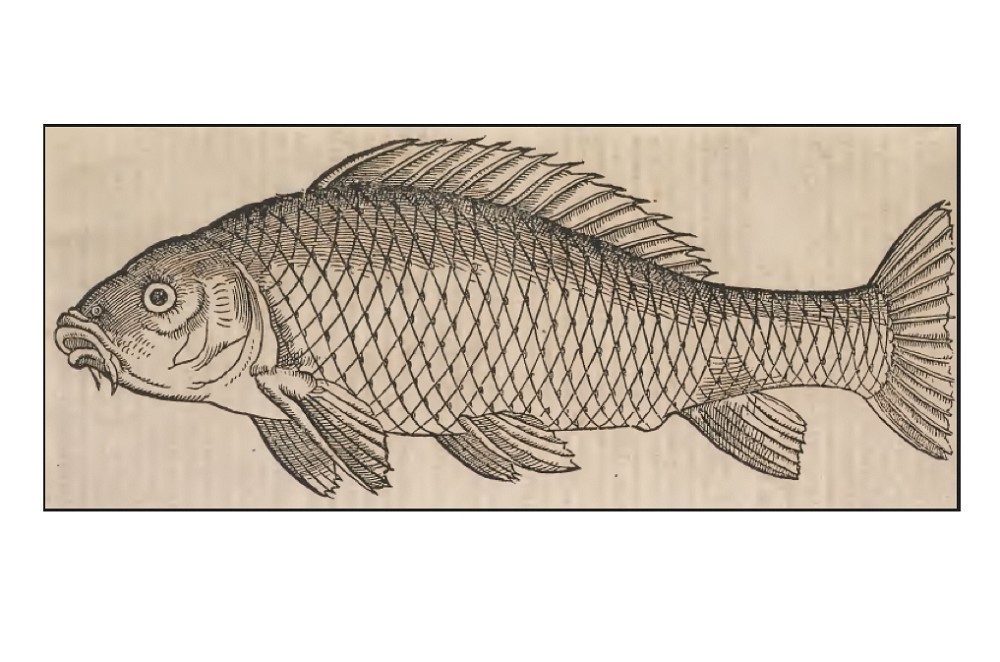 Conrad Gessner’s image of a carp from one of the early European works on natural history – Historiae Animalium IV, 1558
Conrad Gessner’s image of a carp from one of the early European works on natural history – Historiae Animalium IV, 1558The increasing degradation of once clean, running waters caused a fundamental shift in the dominant fish communities and as a result, in the type of fish people ate. And fish as a food source were tremendously important. Religious restrictions meant that no meat, no quadruped meat that is, could be eaten on about 180 days of the year – Friday’s and various other religious holidays. Initially rivers supplied the fish eaten on these non-red meat days. Salmon, trout, lampreys, shad, sturgeon and other species characteristic of clear, unpolluted running water featured largely in mediaeval meals of the time. But, as the land under cultivation and the human population increased, the amount of water that best supported these species (clean, clear, well oxygenated), declined and so did the abundance of those fish that relied upon it. Stillwater fish became more and more prominent in early records.
The slump in riverine fish populations had another galvanising effect. Rather than having to chase fewer and fewer river fish, people began to stock purpose-built ponds and lakes. At first these ponds simply held wild caught fish until they were needed for the table. Gradually though, the process became focused on developing a complete aquaculture system with the largest stock fish held back to provide eggs for the next round of cultivation. The fish that populated these stock ponds were those suited to stillwater, those locally available in the region: bream, tench, roach, perch and pike. It didn’t take long though for the faster growing carp to start featuring in fishpond records.
Between 1100 and 1300AD, the time when fishpond construction and use was really getting going, carp had radiated across the heartland of mediaeval northwestern Europe. They had made their way into the lower Rhine and Meuse rivers, had travelled (or more likely been transported) south into the Paris basin and across to Burgundy, an area through which flows the upper waters of the Seine, Loire and Saône. In 1258 the records of the Count of Champagne provided the first documented evidence that carp were being stocked into ponds and from there the carp’s popularity saw it largely displace the slower growing tench and bream throughout this region.
By the mid-fourteenth century, carp had reached southwestern France, southern Scandinavia and east central Europe particularly the area that would become one of carp productions heartlands, Bohemia, Moravia (now regions in the Czech Republic) and southern Poland. It was here in the late 1400s during the golden age of pond construction that 25,000 carp ponds were built in Bohemia and Moravia alone. By 1547 fish culture was so important that Janus Dubravius, a Czech bishop, would write and published what would become a much translated and referred to work, De piscinis ad Antonium. In it Dubravius described how to construct and manage fishponds and strongly advocated that carp were by far the best fish to put into, rear and harvest from these new waters.
Carp then, though never originating in Western Europe were well established across the region by the 1500s. They dominated fish culture systems and formed an important, if exclusive, source of food for those who could afford to build and maintain the ponds (the church and aristocracy in the main). Carp culture did decline in many areas in later centuries but there’s little doubt that escapees and deliberate stocking of natural waterways would soon see carp spread much further and wider than the confines of regulated and harvested ponds.
Did anybody fish for these escapees? Sources of information about fishing in mediaeval times are few and far between just as they are in England. The flowering of writing on field sports didn’t really get going until much later. Nevertheless, there is a famous booklet by Jacob Köbel published in 1493, called simply ‘How to catch fish’. In it he not only notes that carp are good (to eat) all the year round (except for May and June when they spawn), but also proffers a bait recipe specifically for carp made from cheese, caddis fly larvae, egg yolks and a bean sized amount of camphor all mashed together before being moulded onto a hook. Another bait, good for “many fishes” (this time made from human blood, saffron, barley flour, unleavened bread and rendered deer fat, again all mixed together), seems to predate Messrs. Maddocks and Middleton’s Hair rig by nearly 500 years. The instruction for the bait’s use was to tie it to the hook.
How widespread fishing for carp was at this time, indeed how widespread recreational angling was, is impossible to say. But what can be said is that by the 16th century carp were not only a significant food source but also, albeit in a small way, the target of anglers purely for the pleasure found in fishing.
With mainland Europe sorted for carp then, an obvious question remains. What about England? When did this fish cross the channel and arrive in our waters? The answer to that question, along with what the early English anglers thought of the fish, will be the subject of next month’s article.



